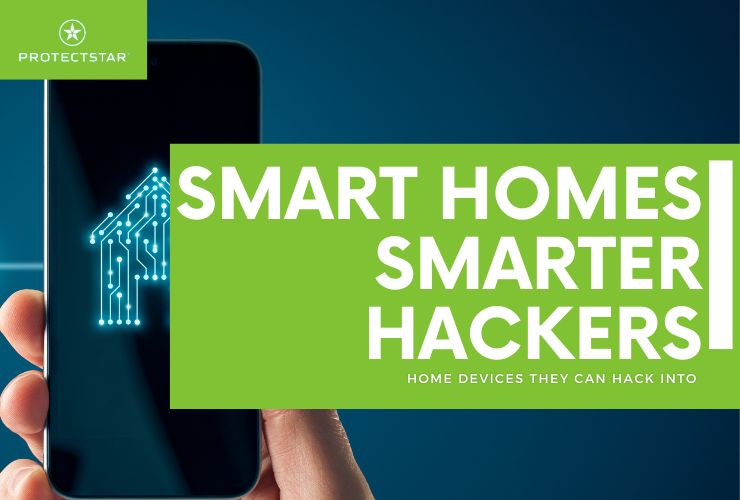Smart Homes, Smart Devices and Smarter Hackers

April 30, 2024
Malware isn't just a problem for computers anymore. As our homes become increasingly interconnected with smart devices, a new frontier for cyberattacks has emerged. A garage camera, a mixer, a homephone system - all these devices that can interconnect with other gadgets can pose a threat.
So what are the most surprising devices hackers can get into?
- Smart TVs: We all love streaming our favorite shows, but smart TVs can be vulnerable to malware that tracks your viewing habits, bombards you with unwanted ads, or even steals your login credentials.
- Smart Speakers: Those handy voice assistants listening to your every command are also potential targets. Hackers can exploit vulnerabilities to eavesdrop on your conversations, hijack your voice commands, or even use your speaker as a launchpad for further attacks on your network.
- Smart Appliances: From internet-connected refrigerators to self-cleaning ovens, even our kitchen appliances are getting smarter. The downside? These advancements can introduce security risks. Malware can disrupt appliance functionality, steal energy usage data, or even be used to launch denial-of-service attacks.
- Fitness Trackers and Wearables: These wearable tech marvels track our health and fitness data. Unfortunately, hackers can exploit security flaws to steal this sensitive information or even manipulate the data to give inaccurate readings.
- Smart Toys: Who knew even our children's toys could be vulnerable? Connected toys can be hacked to steal personal information, contain hidden malware, or even be used to spy on your child's activities.
So, how do we protect ourselves in this new landscape of connected vulnerabilities? Here are some essential steps:
- Research before you buy: Choose smart devices from reputable brands with a good track record on security updates.
- Change default passwords: Don't leave your devices vulnerable with easy-to-guess passwords. Set strong, unique passwords for each device.
- Enable two-factor authentication: This adds an extra layer of security by requiring a second verification step during login whenever possible.
- Keep your software updated: Just like your computer, regularly update the firmware and software on your smart devices to patch security vulnerabilities.
- Segment your network: Create a separate network for your smart devices to isolate them from your main network and limit the potential damage of a breach.
- Disable features you don't use: Some features on smart devices collect unnecessary data. Turn off features you don't use to minimize your attack surface.
What other tips do you have for a safe and protected smart home? Write us on social media @protectstar on X and Linkedin and protectstar-inc on Reddit!